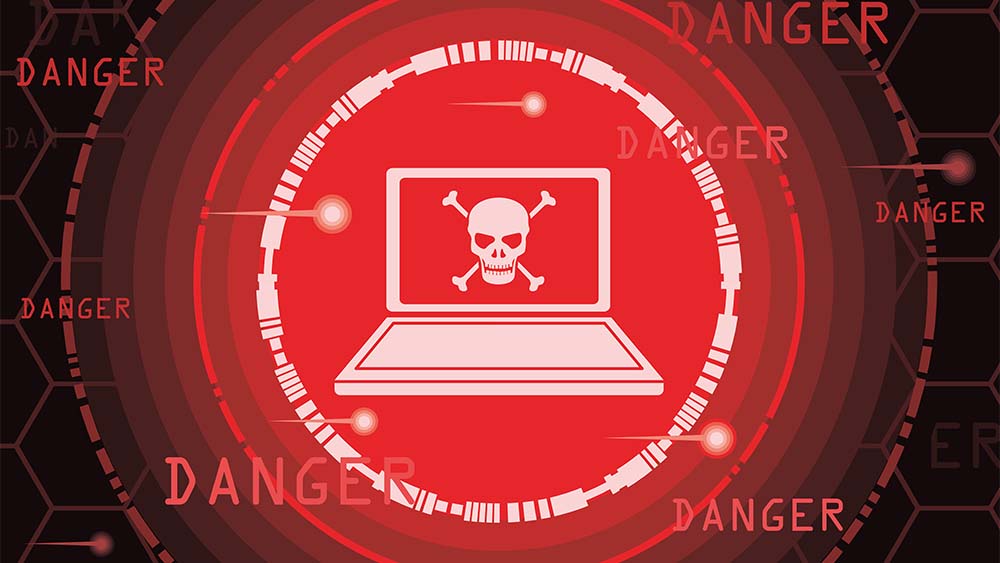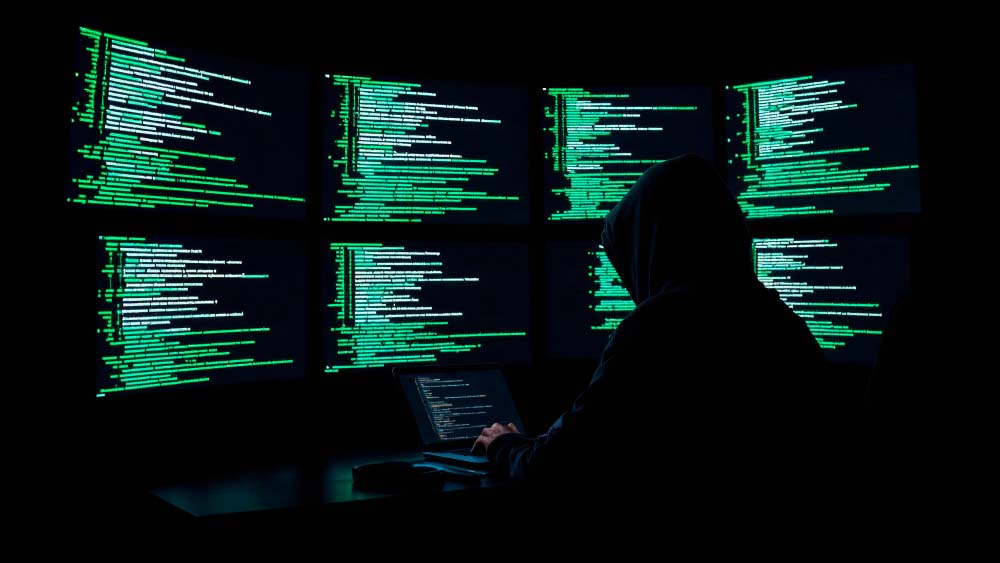As we move into the mid-point of 2020s cybersecurity remains a crucial issue for governments, businesses as well as individuals. The increase in cyberattacks, along with the speed of technological advancements, mean security landscapes are continuously changing. What worked for security five years ago might not be enough in the present and the threats that we will are facing in the next few times could be very different.
In the future What will cybersecurity look in the next five years? In this blog we’ll look at the newest technology and trends that will influence the landscape of cybersecurity and offer suggestions on how companies and individuals can be prepared for the future.
1. The Rise of AI-Powered Cyberattacks and Defenses
Prediction: AI and Machine Learning Will Drive Both Cyberattacks and Cybersecurity Solutions
Artificial Intelligence (AI) is currently playing an important part in the cybersecurity ecosystem. As AI technology continues to improve in the future, we can expect them to become more important to both cyberattacks and defense strategies. In the coming five years, cyberattacks powered by AI will get increasingly sophisticated and automated and hard to spot, creating new challenges for defenses.
AI-Driven Cyberattacks:
-
Autonomous malware Cybercriminals are likely to utilize AI to develop malware that adapts and change in real-time and avoid the detection of traditional security tools. AI-based malware learns from its environment, which makes it more difficult for systems of security to anticipate and eliminate it.
-
Deepfake attacks Deepfakes based on AI could increase in popularity as hackers employ realistic imitations of voice or video to trick victims into divulging personal information or allowing fraudulent transactions. This could pose a major problem for traditional methods of authentication.
-
AI-powered Phishing Machine learning algorithms will be employed to make phishing attacks more efficient to make their messages more persuasive and personalised. AI is able to analyze huge amounts of information on the person being targeted and design the phishing message which is more likely to fool the person receiving it.
AI-Driven Cybersecurity Solutions:
-
Automated Threat Response and Detection on one hand, defense AI is used for automating detection of threats as well as recovery. AI models that learn from experience will analyse vast amounts of data to identify patterns of suspicious behavior and threats in real-time and then autonomously responding to neutralize the threat.
-
Predictive Analytics Machine learning will assist security personnel anticipate cyberattacks ahead of time by studying previous data, identifying emerging dangers, as well as identifying weaknesses prior to their exploit.
2. The Expansion of Ransomware as a Service (RaaS)
Prediction: Ransomware Will Become More Sophisticated and Accessible to Cybercriminals
Ransomware has grown from a tool that was used by a few skilled hackers to a major threat to the world. One of the most concerning trends in ransomware is the rise of Ransomware-as-a-Service (RaaS), where cybercriminals sell ransomware tools and services to less experienced hackers for a share of the ransom.
As we progress this trend will continue to increase, opening the door for more attackers to conduct massive ransomware attacks. This will only increase the risk environment.
Key Predictions:
-
Greater accessibility Platforms for RaaS continue to grow and lower the barriers to entry for cybercriminals while increasing the frequency of ransomware-related attacks. Expect more small-to-medium-sized businesses to become targets as they lack the robust security infrastructure of larger enterprises.
-
Triple and Double Extortion: Ransomware attacks could expand to include a variety of methods of extortion. Alongside encryption of information, cybercriminals may also access sensitive information and threat to release it in public until they receive a ransom. The “double extortion” technique is often combined with threats to interfere with business operations, resulting in an “triple threat of extortion” model.
-
Attacking Critical Infrastructure Attacks by ransomware on critical infrastructures such as healthcare grids, energy systems, and transportation networks are expected to become more frequent. These attacks are not just going to cause financial losses but will also have real-world implications that include threatening security of the population or causing widespread disruptions.
3. Increased Use of Quantum Computing and its Impact on Cryptography
Prediction: Quantum Computing Will Challenge Existing Encryption Standards
Quantum computing which makes use of fundamental principles from quantum mechanics to carry out calculations that are more efficient than conventional computers, is poised to revolutionize a variety of sectors which includes cybersecurity. However, it could also pose an immediate threat to the existing security standards for encryption.
Key Predictions:
-
Quantum breakthroughs In the course of five years we’ll see significant advances in quantum computing. This could allow quantum computers overcome encryption methods currently in use, such as RSA as well as ECC (Elliptic Curve Cryptography). After this, conventional encryption with public keys may become outdated, rendering sensitive data vulnerable to encryption.
-
Post Quantum Cryptography: To counter the quantum threat that is threatening the world, there will be an increase in the development and use of post-quantum encryption (PQC) techniques. They are created to stand up to quantum computer attacks. Businesses will have to start moving to PQC solutions to ensure the future of their systems.
-
Quantum Key Distribution (QKD): Quantum key distribution is a promising technology that utilizes quantum mechanics to secure exchange of encryption keys. It is likely to play an important function in securing communications as well as transactions in the future that quantum computers have the capability to defy the current encryption standards.
4. The Increasing Importance of Privacy and Data Protection
Prediction: Data Privacy Will Become a Core Focus for Businesses and Governments
The digital footprint of individuals increases as do the amounts of sensitive personal information being stored, collected and analysed. Data breaches continue to happen at an alarming rate, privacy issues are in the forefront of the security discussion.
Key Predictions:
-
The most stringent Regulations The HTML0 stringent regulations are a good indication that we can anticipate the trend towards more stringent data privacy laws to continue. In the coming 5 years, more nations are expected to adopt robust legislation on data protection, like the EU’s General Data Protection Regulation (GDPR) which gives consumers more security over personal information. Companies are to account for any data breach and face higher penalties for non-compliance.
-
Technology that improves privacy The need for tools focused on privacy will grow. This includes tools like end-to-end encryption, zero-knowledge-proof systems and tools for anonymous browsing. These tools will allow users to protect their privacy online regardless of how the methods of collecting data increase.
-
Data Localization Concerns over privacy of data grow there will be an increase in localization laws that oblige businesses to store and process data within the boundaries of the nation in which it was gathered. This could have profound implications for multinational companies as well as the global ecosystem of data sharing.
5. Cybersecurity Talent Shortage and the Shift to Automation
Prediction: The Demand for Cybersecurity Professionals Will Outpace Supply, Accelerating Automation in Security
The lack of cybersecurity experts is among the most pressing issues in the business. As cyber-attacks increase in both sophistication and volume the need for highly experts in cybersecurity is expected to outpace supply.
Key Predictions:
-
Greater Automation In order to close the shortage of talent, companies are increasingly turning to automation for routine tasks like security identification, response to incidents and management of patches. Automation will enable security teams to concentrate on more strategic goals and more complex attacks.
-
AI-Assisted Security Operation: Machine learning and AI will play a major part in automating threat analysis and response, making security processes more efficient. It will also allow organizations to increase their cybersecurity protections without the need to hire additional staff.
-
Concentrate on the development of cybersecurity skills Educational and business institutions must invest in cybersecurity-related training programs to fill the shortage. Boot camps, certifications, and degrees at a college that focus on cybersecurity will become increasingly well-known as companies battle to find candidates who are qualified.
6. The Convergence of IT and OT Security
Prediction: The Blurring of IT and OT Will Lead to New Security Challenges
In the future, as both Internet of Things (IoT) and operational technology (OT) become more interconnected to corporate IT infrastructure, the lines of IT as well as OT security will remain blurred. This new convergence will lead to new security risks and vulnerabilities.
Key Predictions:
-
Unity of Security Models The organizations will have to create integrated security strategies that incorporate IT as well as OT security. This requires applying the traditional cybersecurity concepts to OT systems that are often removed from the security discussion due to their unique operational needs.
-
More cyberattacks on Critical Infrastructure as OT systems such as production equipment, grids for energy and transportation networks become interconnected to the internet, they’ll be more susceptible to cyberattacks. Hacktivists, hackers as well as cybercriminals will attack OT infrastructures to interrupt their operations or take sensitive data.
Conclusion: Preparing for the Future of Cybersecurity
In the next 5 years, developments of cybersecurity will surely be affected by the rapid advancements in technology as well as the increase of AI-driven threats and quantum computing issues as well as a growing focus on data security and privacy. To stay on top, companies as well as individuals need to be proactive in adapting to their strategies for security, invest in new technologies, and be prepared for the changing threat landscape.
In embracing automation, developing cybersecurity expertise, and adopting strong privacy protections We can ensure the digital future, a future where security isn’t just necessary, but rather an absolute right.








